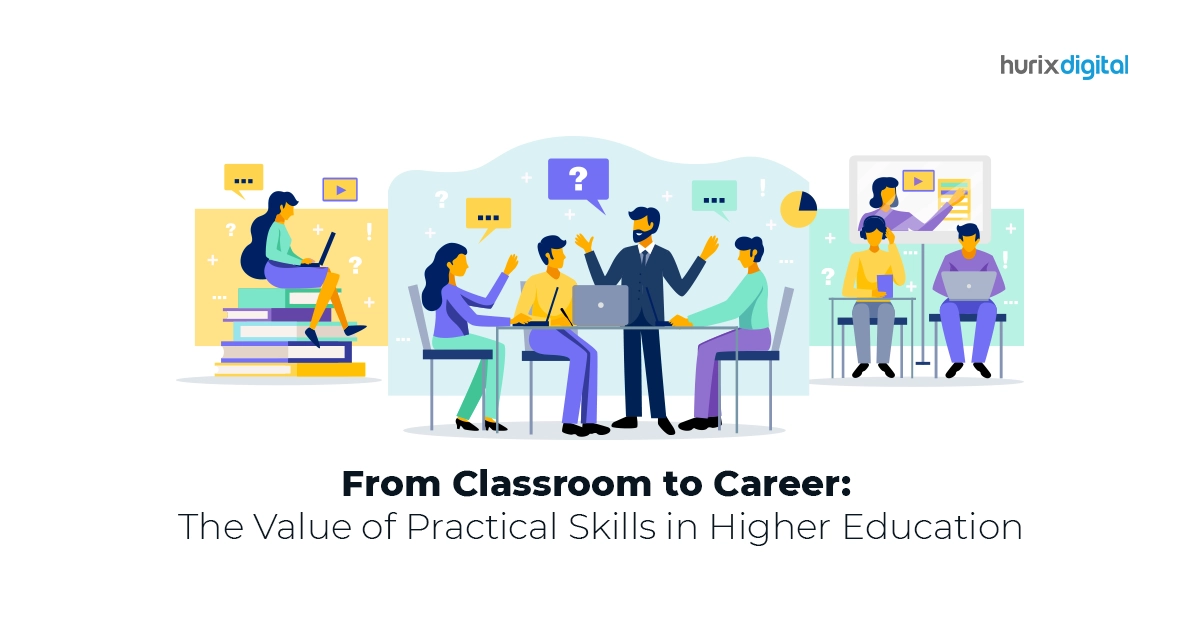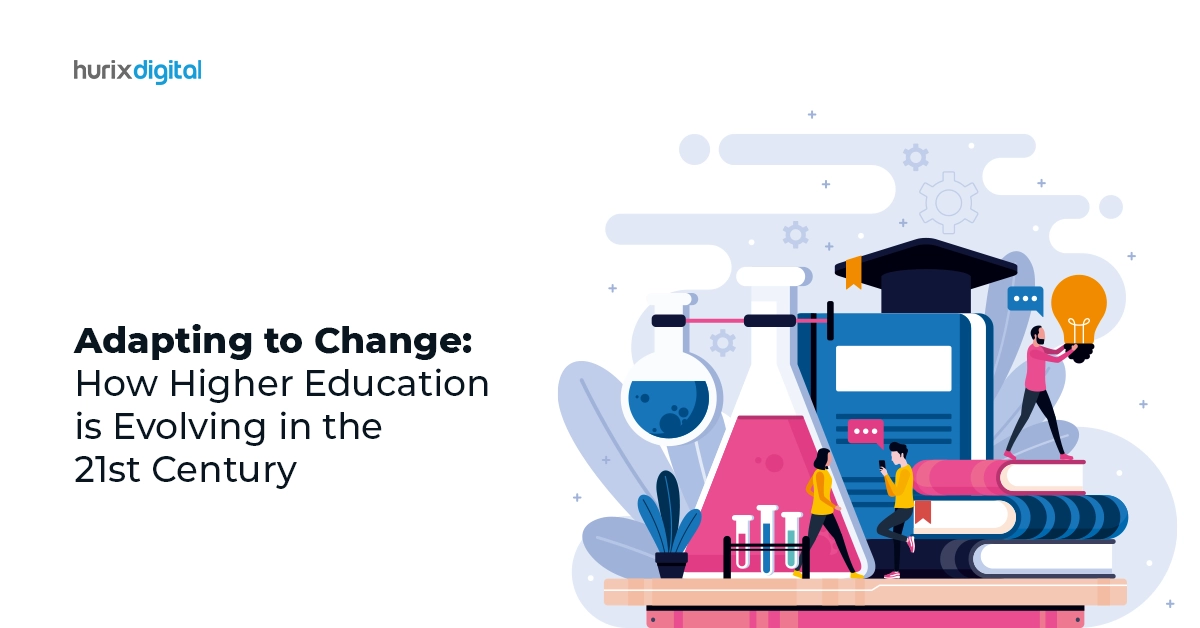At a time when online education is taking the world by storm, online curriculum development for higher education can be a daunting task. Faculty members and administrative staff of higher education institutions are constantly on the lookout for tools to develop a curriculum that students can successfully complete and retain. Here, it is important to keep in mind that online education is not an alternative to traditional learning and so the online curriculum development process is different.
Table of Contents:
1. Collate Your Material
2. Establish Goals and Time Frames
3. Map Your Course
4. Align Your Module to the Objectives
5. Assessment Exercises
6. Start Building Your Course
7. Offer Options in the Delivery Mode
8. Make it Engaging for the Students
9. Incorporate Modern Pedagogical Practices
A 10-year study conducted by the Online Learning Consortium shows that about 6.7 million students have taken at least one online course, and about 32% of higher education students take at least one online course during their educational journey. And with each passing year, the figures continue to rise. Online education is here to stay. However, transitioning to an online environment presents its set of challenges. A good way to approach online curriculum development is to keep the student learning outcomes as the focal point and then navigate through the amazing possibilities offered by the online environment.
Related Read: Importance of Digital Curriculum Development in Higher Education
Here, in this blog, we discuss some of the best practices in online curriculum development for higher education.
1. Collate Your Material
Organization is key to any successful project. Collect all your resources and instructional material you have taught, researched or taken from your colleagues. These can include textbooks, hand-outs, syllabii, notes, lectures, assignments, quizzes, exams, projects, journal articles, and online resources. Next, organize in a format or file you can easily access. This process will help you refer to different resources immediately, without wasting time searching for each material, while developing the online curriculum.
2. Establish Goals and Time Frames
Best practices in curriculum development takes time. So, develop a timetable to plan, design and build the competencies for each module of the course. You will need to design activities, assessments, lectures to teach these competencies in the form of a unit or module. This will help students understand what they will be learning, the activities and assignments that will help them along the learning journey, and in the end, evaluate what they have learnt.
3. Map Your Course
Decide the competencies you want to thread through the course. Next, sequence these clusters in a logical order to create modules based on the depth of knowledge that the students would have to acquire with each topic.
Consider the following questions while mapping each module:
- Does it include an action statement?
- What key concepts are to be covered in it?
- What activities and resources you will integrate to make learning meaningful?
- Does it express what the students are expected to do?
4. Align Your Module to the Objectives
Again, think from the students’ perspective during online curriculum development. You may love your course content and want to throw everything in it, but your students may feel otherwise. It is essential to keep them focused, so use the learning objectives as a yardstick to select what to include in the course. The selection process will help you align all activities in the course components and help students meet the learning objectives.
To go about this, build a conceptual framework for each module. Identify and outline the course competencies and learning objectives. Review the course components and see if they fit with the stated objectives. If they don’t, either change the course component or the learning objective. Make sure that the framework is as detailed as possible. You can also use it to provide learners an overview of each unit, and the activity, technology, assignment, material, and/or assessment associated with it.
5. Assessment Exercises
You will also need to consider how you will assess your students during the online curriculum development process. Keep in mind that assessment is more than just quizzes and tests. True assessment allows both instructors and students to gauge their progress. So, how to embed assessments that demonstrate whether students have grasped the course concepts?
You can have two types of assessments – summative and formative. The former evaluates student learning outcomes at the end of the module, course, or semester. The latter helps to monitor learning outcomes throughout the learning process. Formative assessment allows students to identity and clarify doubts and misconceptions before moving to the next level of the module. Classroom assessment techniques, or CATS, is a popular form of formative assessments, serving two purposes: showing how well the students are grasping the content, and secondly, providing invaluable feedback for course correction.
6. Start Building Your Course
Once you have completed the above steps, you are ready to put your curriculum online. So how to go about this process? You can browse through other online courses to see the features and design elements they have incorporated. You will get a wide range of design ideas regardless of the subject. You may also wish to find and add additional resources to supplement your own content. A sea of free resources is available online. The key is to make sure that the resources you use align with your learning objectives. You can browse through Open Educational Resources (OER) which are freely available and can include activities, images, assignments, or a full textbook.
Also Read: 10 Tips to Select the Best Online Course Development Partner
7. Offer Options in the Delivery Mode
Given that most people now access their content on the smartphones, it is a good idea to offer students options in delivery mode. Ensure that your course content is responsive, which means that learners can access it on their tablets, PCs, laptops and smartphones.
8. Make it Engaging for the Students
An online environment provides exciting opportunities for students to engage with the course content, peers and instructors. So be sure to create a wide range of activities that include collaborative problem-solving, group-work and discussions. Also, select resources that are relevant, have a variety of viewpoints and support different learning styles. A tip for designing each module is that it should ideally have between 3 to 5 learning objectives. If you have more, it means that the module is too task-oriented, or the theme is too broad.
Also Read: 10 Best Practices in Online Course Development
9. Incorporate Modern Pedagogical Practices
One way to go about this is to offer students multiple learning paths with each learning objective. Having multiple branching scenarios will enable students to learn by trial and error and find solutions. Another strategy is to integrate microlearning, which is the latest trend in online learning. In microlearning, the courses are presented in the form of short learning nuggets so that students are exposed to small learning units and there is no cognitive overload.
Also Read: Online Learning Courses – The New Reality for Institutions and Students
In conclusion
To sum up, best practices in curriculum development can be both a challenging and exciting opportunity to engage with higher education students.
The way forward is to create an effective curriculum development strategy. Include a framework to map the entire course, create learning objectives for each module and ensure they align with the course component.
The online world provides a host of free teaching resources, so use them to support your content. Use digital media formats such as videos, games, infographics, presentations, etc., to make the course more engaging and exciting.
Finally, don’t compromise on consistency in design – each module of the course curriculum should have a similar template and design to ensure a sense of familiarity.
Get in touch with us for your online learning content requirements.
Suggested Reads:











